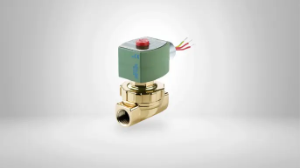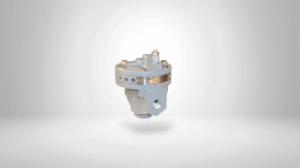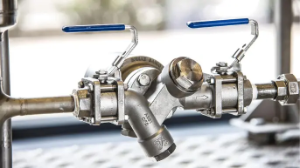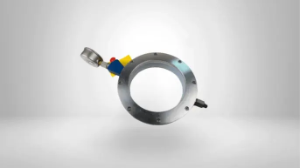
Valve, Actuation & Engineered Products Division
Centro's Valve, Actuation, and Engineered Products Division are at the forefront of industrial manufacturing, where Process Control, Flow Control, Electric Tracing, Steam Control, and Loading and Unloading play pivotal roles in shaping manufacturing efficiency and product quality.
Discover how Centro's Valve, Actuation, and Engineered Products Division can be your trusted partner in achieving manufacturing excellence. Explore our comprehensive solutions and services, and let us drive efficiency, reliability, and safety in your operations, which include:
- Valve Applications: Achieve precision in fluid control
- Electric Heat Tracing Applications: Tailored solutions for temperature control
- Steam System Applications: Enhance steam utilization for reliability
- Loading & Unloading Systems: Streamline rail and truck operations
- Valve & Actuation Repair: Lower operating costs through automation
Division Product Categories
Below, you can find products available for online purchase now. Please note that we offer a broader range of products not listed here. To access our complete product catalog, kindly reach out to Centro or download our line card below.

Valves control, regulate, and direct the flow of fluids in industrial systems. They keep water, steam, chemicals, gases, slurries, and light oils moving safely and efficiently. A valve either shuts flow off completely, adjusts flow to a target rate, prevents reverse flow to protect pumps and equipment, or relieves pressure at a set point. Common designs include ball, butterfly, gate, globe, check, knife gate, needle, plug, diaphragm, pinch, and pressure relief and safety valves. Manual versions use handwheels, levers, chain wheels, or gear operators. Actuated packages use electric, pneumatic, or hydraulic power and tie into plant controls with discrete signals or 4 to 20 mA loops, positioners, limit switches, and solenoids. Self-actuated valves respond to the process on their own, as with pressure relief valves that open at a set pressure or check valves that react to flow direction.
How to choose the right valve
- Define the job. Is the duty isolation, throttling and control, backflow prevention, or overpressure protection
- Confirm operating conditions. Pipe size, flow rate, required Cv and allowable pressure drop, pressure and temperature range, and cycling frequency
- Know the media. Viscosity, solids content, abrasiveness, corrosivity, toxicity, whether the service is clean steam, oxygen, vacuum, or sanitary
- Select the design. Ball for quick isolation and low pressure drop, globe for precise control, butterfly for compact large diameter service, gate for full open isolation, knife gate for slurries, check for non return, diaphragm and pinch when the fluid must be isolated from moving parts, plug for dirty or corrosive service, relief or safety for set point protection
- Pick end connections. Threaded NPT, socket weld, butt weld, flanged in ASME classes, wafer and lug for butterfly and wafer check, sanitary clamp for hygienic lines
- Decide on actuation. Manual, electric, pneumatic, or hydraulic. Specify fail open or fail closed, duty cycle, air quality for pneumatics, and any local controls
- Check standards and testing. Look for compliance with widely recognized design and leakage criteria, fire safe construction where required, and low fugitive emissions where mandated
- Plan for maintenance. Consider live loaded packing, stem sealing solutions, and access for inspection. Correct actuator sizing prevents sticking and premature wear
Materials and Ratings
Body and trim materials include brass, bronze, carbon steel, stainless steel, duplex stainless, and specialty alloys for higher temperatures and corrosive media. Engineered plastics such as PVC, CPVC, and PVDF are common where corrosion resistance and lighter weight are priorities. Seats and seals are typically PTFE, reinforced PTFE, EPDM, FKM, NBR, or metal seated options for high temperature and severe service. Pressure and temperature ratings should match your process, with flanged valves available in ASME classes from 150 to 600 and beyond. Choose end connections to fit your piping standard and installation practices, and verify any required certifications for potable water or hygienic service.
Applications and Industries
Industrial valves are used across water and wastewater treatment, chemical processing, food and beverage, pulp and paper, oil and gas, power generation, mining, pharmaceuticals, and general manufacturing. Typical applications include isolation at pumps and tanks, throttling at heat exchangers and reactors, non return protection on discharge lines, slurry handling in sumps and clarifiers, clean steam distribution, and pressure relief on vessels and pipelines.
Frequently asked questions:
- Which valve is best for throttling?
- Globe valves are the standard choice for precise control. V port ball valves and high performance butterfly valves also provide good control with lower pressure drop.
- What size and pressure class should I order?
- Match the pipe size and operating pressure. Share your flow rate, pressure, and temperature and we will size the valve and recommend the correct class.
- Can I automate an existing valve?
- Often yes. We will review torque, stem details, mounting interface, and service conditions and provide an actuator kit or a complete replacement when that is the better option.
- How do I reduce water hammer
- Use properly selected check valves with the right cracking pressure and damping, add surge arrestors where needed, and avoid abrupt valve closures.
- What is the difference between full port and standard port ball valves?
- Full port has an opening equal to the pipe bore for minimal restriction. Standard port is smaller, which reduces cost and weight but adds pressure drop.
Let Centro Help!
Contact us and let a product expert help you in selecting your line size, media, pressure and temperature, end connection, and whether you need isolation or control. We will recommend a valve and, if needed, deliver a complete automated package with the right actuator, accessories, and testing so you can install with confidence.

Actuation refers to the process of causing something to move or operate. This can be achieved by using an actuator, a device that converts a source of energy into motion. There are two types of actuators: linear actuators, which move in a straight line, and rotary actuators, which produce rotary motion. Actuators are commonly used in various industries, including manufacturing, automotive, aerospace, and robotics.
Engineered products are designed and manufactured to meet specific technical and performance requirements. They are typically custom-made or tailored to fit a particular application or need. Some examples of engineered products include actuators, heat exchangers, loading systems, and filtration systems.

Steam traps are automatic valves that filter out condensate and non-condensable gases such as air without allowing steam to escape. In the industry, steam is utilized regularly for heating or as driving energy for mechanical power. Steam traps prevent condensation from being wasted. There are three types of steam traps thermostatic, mechanical, and thermodynamic. Thermostatic steam traps act in response to the surrounding steam temperature. There are three types of thermostatic steam traps liquid expansion traps, bimetallic and balanced pressure thermostatic traps. Each operates differently and is suited to specific kinds of applications. Mechanical steam traps depend on the difference in density between steam and condensate. They can constantly pass large volumes of condensate and are fit for a wide range of process applications. Mechanical steam trap types include ball float and inverted bucket steam traps.

Isolation rings, also known as isolation mounts or isolation pads, are essential components used to prevent the transfer of vibrations and shocks between interconnected machinery or equipment. These rings are typically made of resilient materials like rubber, neoprene, or silicone, and are designed to absorb and dampen vibrations generated by rotating or moving equipment. By creating a barrier between the equipment and its surroundings, isolation rings effectively reduce noise, protect sensitive machinery from damage, and improve overall system performance. They find widespread applications in various industries, including manufacturing, automotive, aerospace, and electronics, where precision and stability are crucial. Isolation rings play a critical role in maintaining smooth and efficient operations while ensuring the longevity of equipment and machinery.
Get the Latest Line Card
View all the brands and products that Centro Inc. distribute and represents in a single PDF packet.
